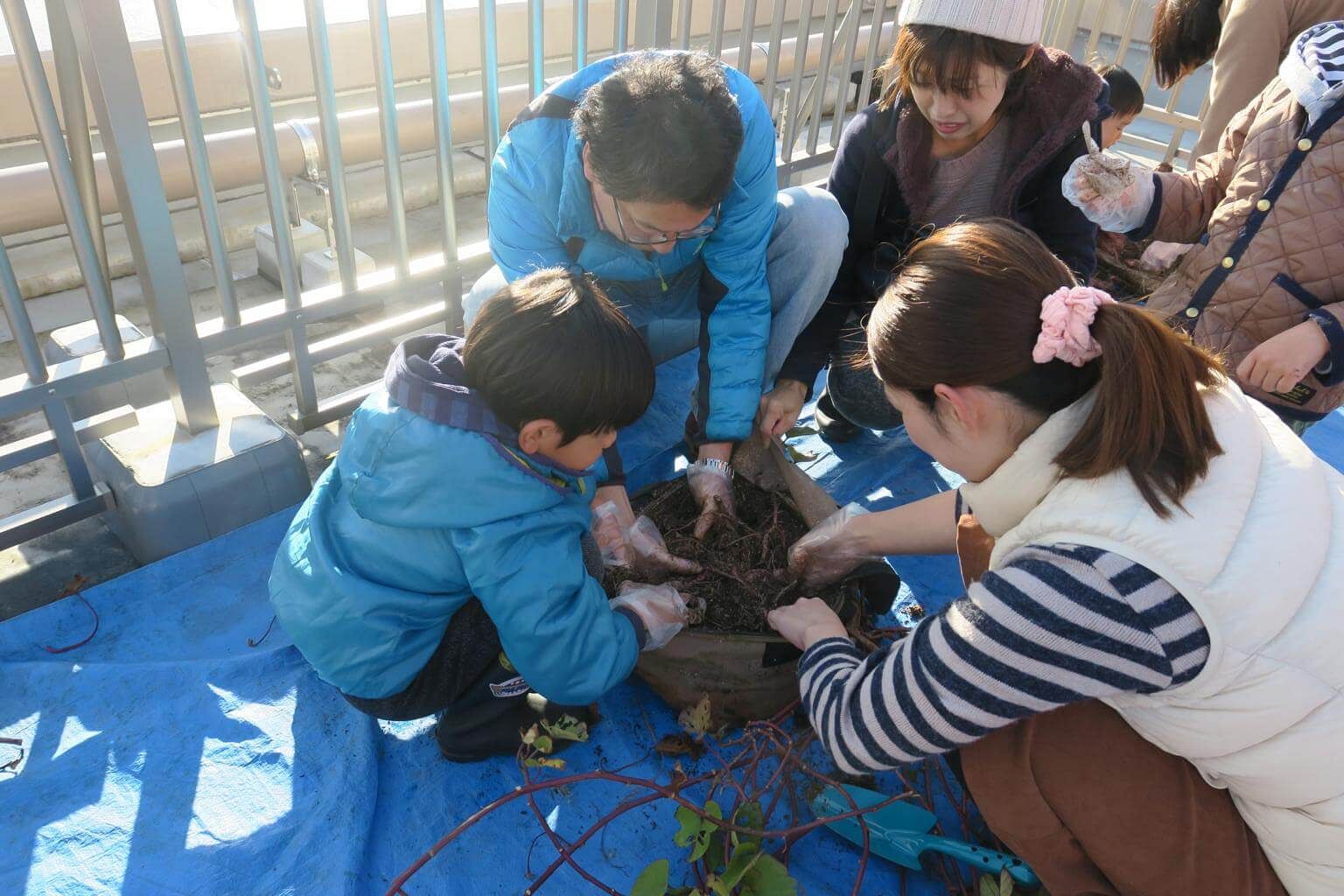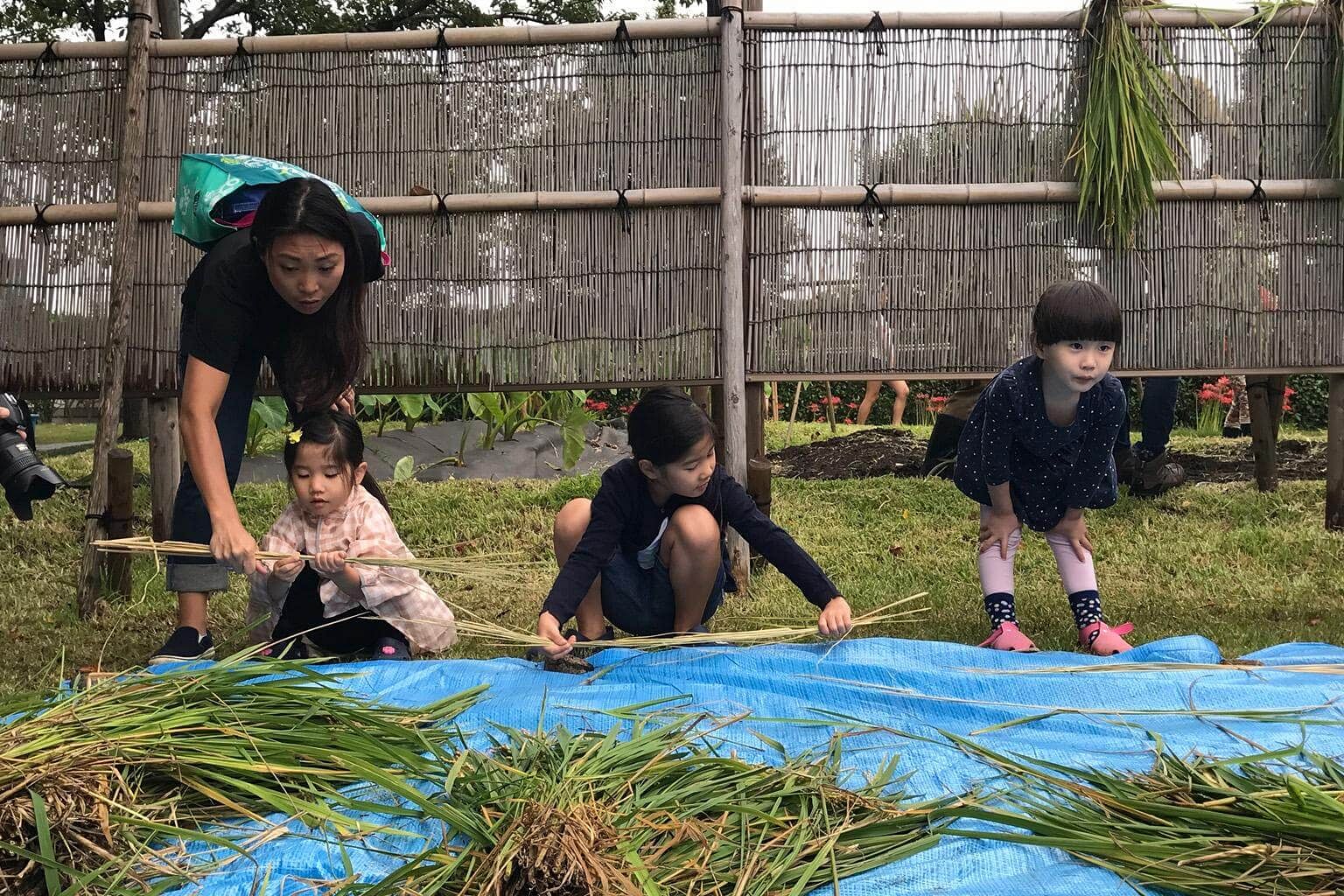On what feels like a lazy afternoon, 12 goats and two cows chew on hay as five piglets oink and 20 chickens cluck in the background.
But this is no traditional rural countryside farm with vast empty pastures. The animals are among nearly 60 creatures living on a "farm" right smack in the Otemachi business district just a stone's throw from the bustling central Tokyo station.
A lift takes you to the Otemachi Bokujyo ("Otemachi Farm") on the 13th floor of a gleaming skyscraper. You step out into natural light streaming in from floor-to-ceiling windows. Tiny plywood picket fences in the 1,000 sq m space separate the animals from visitors.
Across Japan, city dwellers have been developing quite the green thumb. Urban "citizen farms", as they are called, grew in size by 36 per cent over 10 years, from totalling 641ha in 2005 to 877ha in 2015, according to the Ministry of Agriculture, Forestry and Fisheries (MAFF).
While much of this land has traditionally been greenhouses or fields located in city suburbs, there has been a push towards integrating the old-school farming concept into the urban landscape - both for commercial and community engagement purposes - by companies across industries from real estate to transport.
Besides the Otemachi Bokujyo, other examples in Tokyo include a paddy field and a bee farm on rooftops, as well as vegetables being grown for commercial purposes in a high-rise building and beneath train tracks.
The MAFF in 2015 introduced laws to promote and regulate urban agriculture, citing objectives such as food security, landscape greenery and the provision of opportunities for urbanites to engage in agricultural activities.
Already, statistics show that the produce grown in Tokyo itself can feed at least 700,000 people. The land-starved capital, which is larger in area than Singapore, is home to more than 13 million people.
FROM VEGGIES TO BEE FARMS
The Tokyo Metro, which runs nine mostly underground lines across the city, is growing vegetables at a facility underneath an elevated train track near the Nishi-kasai Station in eastern Tokyo.
Neither soil nor pesticides are used in the space, which taps hydroponics technology and is held to strict hygiene conditions, with 400 plants across 11 varieties such as basil and lettuce typically grown.
The cultivated crops are then sold to high-end restaurants around Tokyo, with regular buyers including The Strings at the five-star Intercontinental Tokyo.
Over in the glitzy Ginza shopping district, the 114-year-old stationery store Itoya reopened in 2015 after renovation with features including a hydroponic farm on its 11th floor. The vegetables, grown in high-tech bins, are harvested and served at the 12-storey building's cafe.

Also in the area is the Ginza Honeybee Project, on the top of a building. It was founded by Mr Atsuo Tanaka, a lifelong city dweller who was a beekeeping novice when he began the initiative in 2006, after a chance meeting with a beekeeper from the rural Tohoku region. He had to work to overcome local fears over unprompted bee attacks early on, but has since gained critical acclaim for the honey collected from the beehives. Confectioneries, desserts and souvenirs made from honey collected under the project bear the "Ginpachi" logo, referring to the name of the bees.
COMMUNITY ENGAGEMENT
Real estate developer Mori Building grows rice in a paddy field in a rooftop garden atop a theatre at its Roppongi Hills property in the heart of one of Tokyo's prime nightlife hot spots.
Through community events, children and their parents can get first-hand experience of planting rice seedlings in spring and, later on, of harvesting the rice and threshing the plants.
Mr Reo Sato of the Roppongi Hills' town management department told The Straits Times that the idea was to recreate an old-fashioned Japanese farming site in the middle of Tokyo.
The regular events, he added, also have the benefit of helping to build community ties with residents in the neighbourhood, as well as showcasing rice seedlings from regional prefectures.
For some participants like education service officer Kunika Kurauchi, 36, such events come as an opportunity for her children to experience what it might have been like working in the fields.

The native of Wakayama prefecture, which borders Osaka, reminisced to The Straits Times that she had grown up helping her parents on a countryside farm.
Her three boys - Shogo, seven; Naoki, four; and Yoshihiko, two - had taken part in a rice harvesting event in September last year.
"Now that I'm living in an urban city, I hope my children can get to experience - on a much smaller scale - the hard work that goes behind their food," she said, adding her hopes for her children to learn not to take their food for granted.
Japanese telco engineering giant NTT Facilities, too, grows sweet potatoes on its office rooftop. It then transfers the ripened crops, with soil, into bags that are taken to be "harvested" by residents living at elderly facilities, as well as others in the neighbourhood.
Mr Yuzo Masuda, 36, who works in talent acquisition, was with his wife Yukari, 34, and daughter Nanaka, four, at a harvesting activity in Musashino-seki in western Tokyo's Nerima ward.
He told The Straits Times that he thought it would be a good experience to try his hand at something new, adding: "In Tokyo, there has been an impression that it is lacking in community events that allow people-to-people interaction, and such events are good opportunities to build a community spirit."
But this community engagement comes as an added benefit to the original environmental purpose of what NTT Facilities calls its Green Potato Lite project.

Dr Rie Ueda, the head of sales in the solutions division, said that the sweet potato leaves covering the entire rooftop surface have a cooling effect during summer due to transpiration - the process of evaporating water.
An NTT survey showed that the temperature of the roof area covered by the leaves was asmuch as27 deg C lower than the area uncovered, Dr Ueda said, pointing to a drastic reduction of the "heat island effect", especially in the scorching summers.
Building management company Kajima Tatemono Sogo Kanri has converted a vacant unit in the heart of Hamamatsucho near Tokyo Bay into a shopfront named Tanabatake Sukusuku.
Since 2014, it has offered busy salaried employees the chance to grow their own vegetables for personal consumption, by renting them an indoor garden "bed" for 1,500 yen (S$19) a month. Full-time staff are on hand to help to monitor the plants on behalf of the workers.
Customers choose what they wish to grow from a choice of about 50 plants, and about 20 seeds can be grown in one bed at the same time. While there were no customers at the shop during The Straits Times' visit, Kajima Tatemono Sogo Kanri president Masao Taku said he has himself been using a garden bed at the site.
The occupancy rate is about 90 per cent, with most of the vegetable "farmers" aged above 40 years old, though there has been a growing trend of younger farmers.
FIGHTING A RURAL DECLINE
But the huge interest in urban farms comes amid a waning agricultural industry jeopardised by the twin threats of rural depopulation towards urban cities and an ageing demographic.
MAFF statistics show there were 1.51 million farmers across Japan last year, which is a 40 per cent decline from 20 years ago.
Staffing agency Pasona hopes to fight this decline by driving agricultural interest through its Otemachi Bokujyo project, where there are also 10 flamingos, five scarlet ibises, three owls and an alpaca. "We hope to spread word about food security at a time when Japan's food self-sufficiency rate is falling," Pasona Group chief executive officer Yasuyuki Nambu said in launching the farm in August last year.
The company wants to attract talent into the field of agriculture, to revitalise the waning industry.
And to this end, Pasona is running seminars on dairy farming and has opened a ranch school, besides also conducting ice-cream-and butter-making sessions for the public.
Yet even as rural farming is in decline, going by the newfangled farms and agricultural activities sprouting in the high-rises and empty spaces of highly urban Tokyo, it seems that the old ways of the land are getting a new lease of life - city-style.


